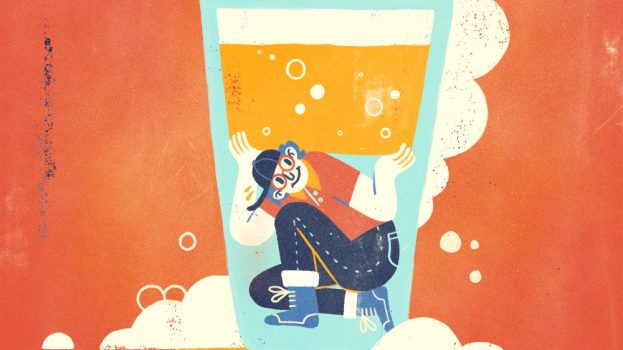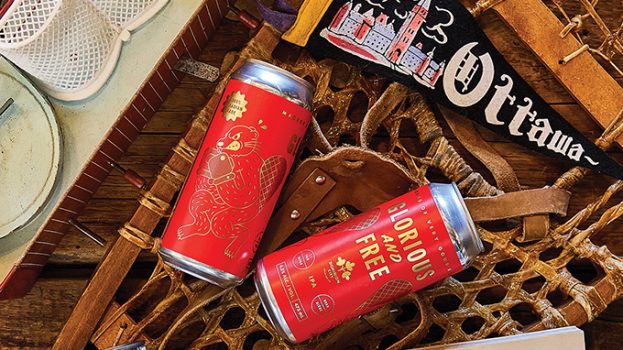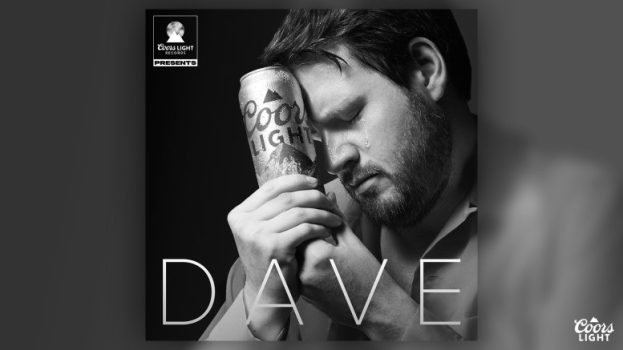
By Will Novosedlik
In this series, we ask top industry execs and marketers across the country about their biggest fears and concerns. What are the things of marketing nightmares? This week, we caught up with Andrew Oosterhuis, VP of marketing at Labatt Breweries of Canada, about the biggest problems he faces.
In his current role, Oosterhuis is responsible for Labatt’s portfolio of brands, including Budweiser, Bud Light and Stella. We asked him about the challenges of finding growth during what has been a very disruptive time for the beer category, threatened as it is by declines in beer consumption, changing consumer preferences, and the explosive growth of emergent categories like RTD and non-alcoholic. Here is what he had to say.
What are the biggest challenges facing you right now?
In my whole career, I’ve always led brands. Now I’m leading a team, which is a big shift. How do I get results through other people? How do I ensure people on my team reach their potential? It’s a very important concept because, as a leader, I’m responsible for their development and progress. If I do a strong job of moving people towards their potential, we’ll deliver against our ambition, which is to be the best marketing team in Canada.
What is the difference between leading a brand and leading a team?
You have your hands on the wheel when you’re leading a brand. Ultimately you get to be a key driver on the decisions that result in the outcome of your campaigns. When you’re leading a team you have to get those results through your people. It’s a hard transition to be honest. So I have this saying with my team, “I have to be eyes on but hands off.” That’s my biggest challenge.
That’s a high bar you’ve set for yourself and your team.
It’s about empowerment, engagement, and accountability. We’re here to deliver results. We have this new framing that I think is an important one for marketers in the current context. We call it “commercial logic, creative magic.” Some brands are very good at creative magic but lose sight of the responsibility they have in service of the business, which is commercial logic. I’m focused on how I can help my team be the best in Canada at delivering solutions with the right balance of commercial logic and creative magic. And that’s the language I am using within our ecosystem, both internally and externally.
Is the size of your team a challenge?
We’re just short of 70. We also have an in-house agency called DraftLine. It’s a large team. And I think that’s part of the reason I try to be consistent with them about what we expect: people who are curious, people who collaborate, people who embrace common language. I always use the example of going to the doctor when you break your arm. They don’t say “you broke your arm.” They use some medical term you don’t understand. We need to do the opposite of that. Marketing often gets obscured by its own jargon. We need common, accessible language internally and externally. And if we do that and we’re curious and collaborative, we’ll get to the solutions we want.
Do you do the creative in-house too?
No. Our lead agency is Anomaly. It’s a good example of a consistent partnership over a decade of working together. When I was leading brands, I worked closely with Anomaly. So I really enjoy when they invite me into the creative presentations now. I think DraftLine plays a great role in terms of complimenting campaigns with additional ideation, adapting global campaigns in an efficient way, and managing our social content.
What are the big competitive challenges for you?
From a competitive standpoint we’re fortunate. We have a pretty beautiful world class portfolio. We’re far and away the leader within beer. But I think we’re more concerned about category than we are about the competitive pressures. Beer as an industry has seen some decline, but we get very excited about new pockets of growth. Premiumization continues to be a huge trend that’s driving brands like Corona to lead category growth. So the beer category has pockets where our portfolio is well-positioned.
What are the external trends or forces acting on the category? For instance, we’ve been seeing a steady decline in beer consumption over the last five to ten years.
What we call “beyond beer,” or the ready-to-drink category, is getting a lot of our attention right now. It’s where we have a much lower share. It’s a category that’s developed quickly and is evolving even faster. The challenge there is just the rate of innovation and change in consumer preferences. For example, cider was a hot growth market for a while. As were coolers. Seltzers exploded. And then there was hard tea. And now we see canned cocktails becoming big. So it’s a lot more complex than beer. Annual flavour innovation drives almost 30% of the category, so you have to try to predict what the next wave is going to be. And thankfully, we are leading that next wave, which we believe to be canned cocktails.
What brands do you own in the RTD space?
We have NUTRL, which is the number one vodka soda in Canada. In the cooler category, we have Mike’s Hard and Palm Bay. These are category originals with lots of equity. Our creative challenge there is how do we rejuvenate these iconic legacy brands in such a wildly innovative category. We have a good legacy portfolio cider, but it’s a very stagnant category to be honest. And we have the canned cocktails, which are seeing very strong growth in the short term.
And then of course the newest growth pocket is non-alcoholic. There’s lots of moments where Canadians love the taste of beer, but may not want the functional effects of alcohol. So as a result we’re seeing double-digit growth in the non-alcoholic category. Thankfully we were one of the first big players to jump in, in 2015 when I was leading Budweiser. We launched Bud Zero (previously known as Budweiser Prohibition) here in Canada. And then there’s Corona Sunbrew 0.0%, which this past year became the number one premium non-alcoholic beer in Canada. It has all the distinctiveness of Corona without the effects of alcohol. And it comes with 30% of your daily requirement of vitamin D to give you sunshine anytime, which is a beautiful positioning for Corona.
If I were to summarize, we’re fully committed to beer. And we are finding great pockets of growth with premiumization. And then we’re finding growth in RTD and non-alcoholic as part of building occasions for consumers.
These developments highlight a trend towards sobriety, especially among Gen Zers. How else are you responding to that?
I’ve been looking for a big QSR partner. For example, if you showed up to a QSR and it had Bud Zero on the menu, they’d be like, you serve Budweiser? Look at the Bailey’s-Tim Horton’s partnership over Christmas. Think about how disruptive it was that there was a Bailey’s coffee at Tim Horton’s. But it was the Bailey’s non-alcoholic version. And then out in the channels they cross-promoted the real Bailey’s with gift cards for Tim Horton’s. I think you’re going to see more of this with the normalization of the non-alcoholic category.






















